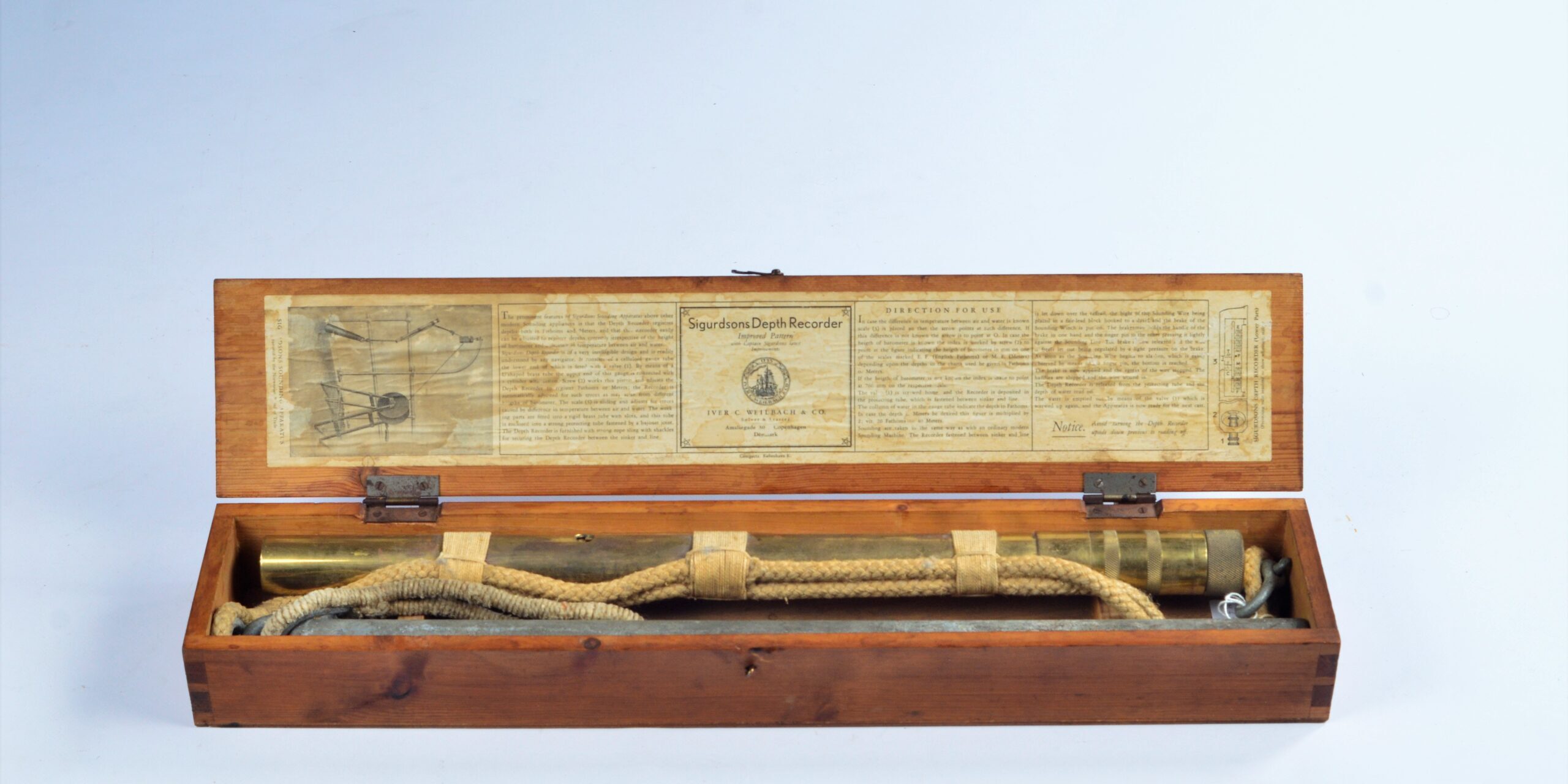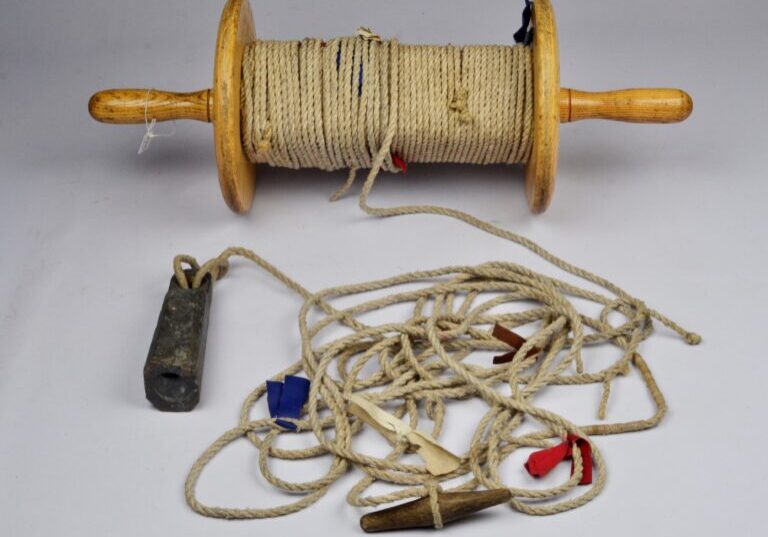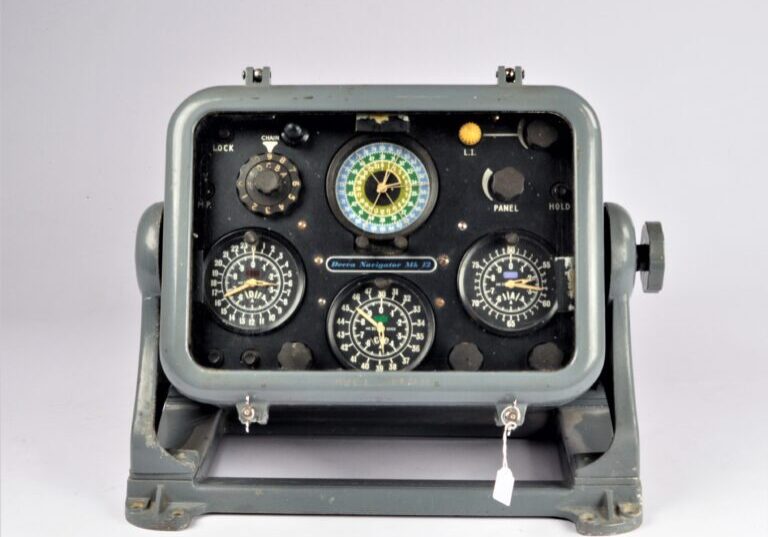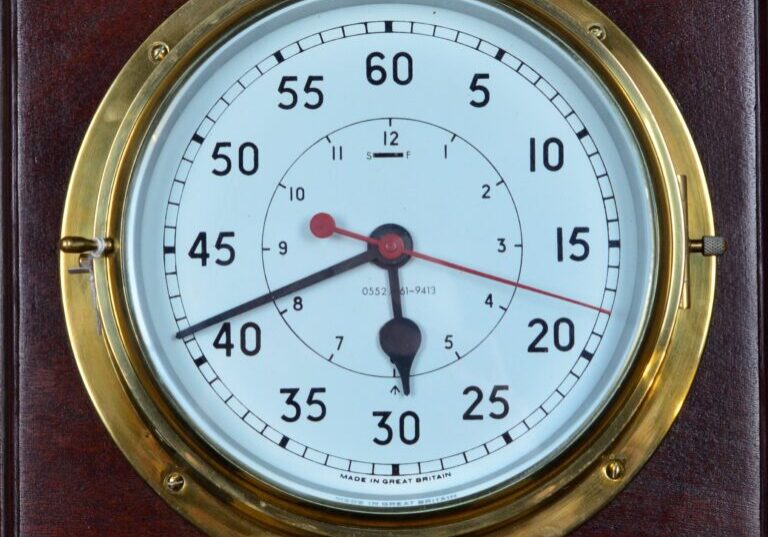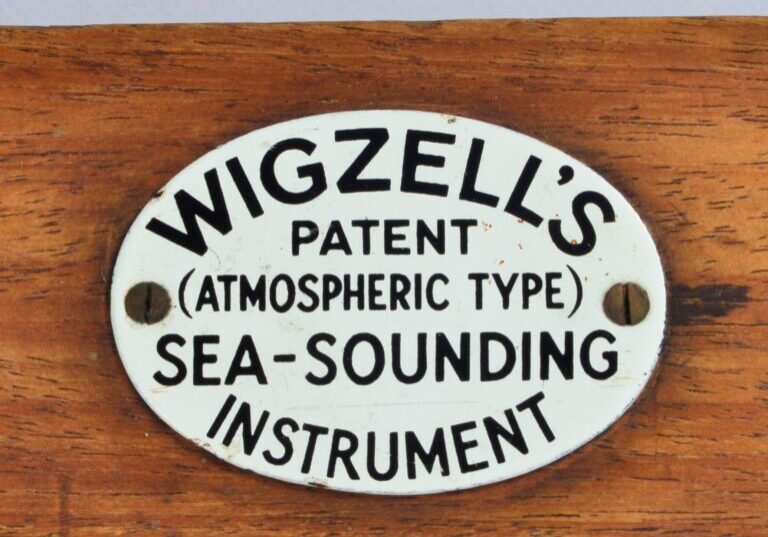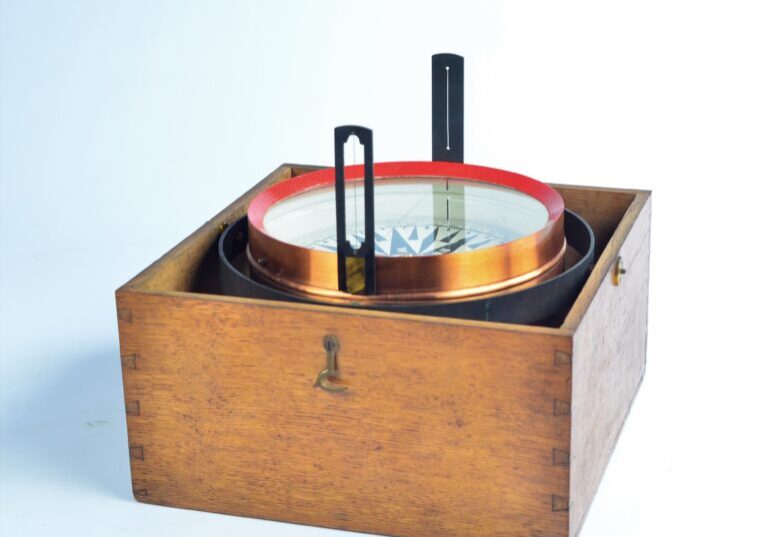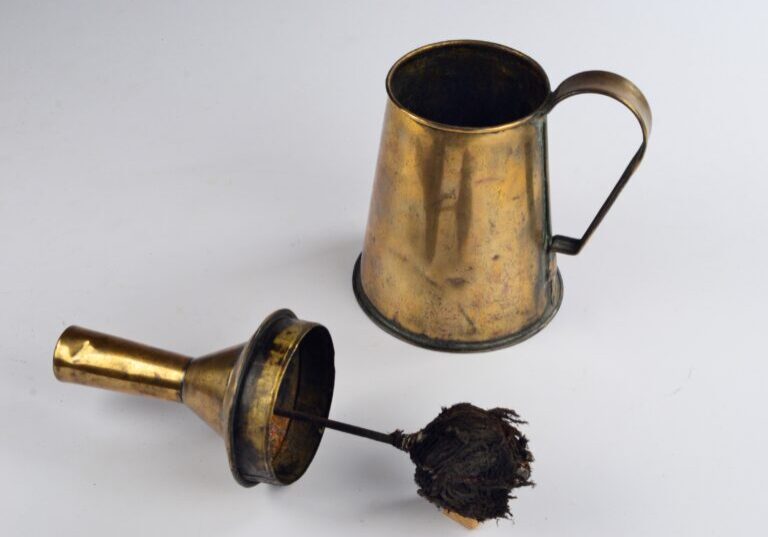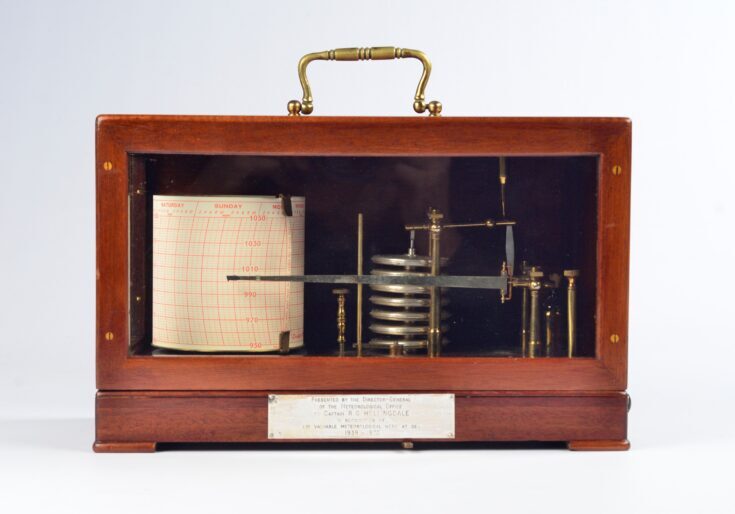Nautical instruments
This part of the collection includes mainly navigational instruments from the early sailing period, the time when ships were made of wood and men were made of steel.
Octagonal deeplead of 6 lbs (Davis, London) with leadline on a reel to find waterdepth and type of soil. The length of the line is 25 fathoms. At equally distances, every fathom, small tarpaulin flags – white, blue, red and leather. Every five fathom a little markline with one, two, three, four or five knots.
The bottom of the lead is provided with a hollow to put in some fat. Adhere soil gives an indication of the structure of the seabottom. At the end of the line a wooden handle useful when ejecting the lead and to facilitate the cleaning of the lead in the water.
The reel is made of oak.
Catalog: NM.4-50
Date: ca. 1900
LD reel: 60×22 cm (23,5×9 in)
Signed: DL
Origin: England
Condition: perfect, working and wear consistent with age and use
Massey taffrail log number 1193 with universal action bracket and tube shaped register. The dial registers up to 100 miles on a porcelain face. The instrument could be boomed out amidship or from the bridge or secured to the taffrail. The production was ceased in 1903.
The universal action bracket, called a Looped Stand Arm and Joint was patented by J.E. Massey in 1876.
The log is also described in Distance Run, page 123 (see cat.nr BK.1-14)
Catalog: NM.4-42
Date: ca. 1890
HWL: 5×9,5×39 cm (2×3.9×15.2 in)
Signed: Edwd Massey’s, nr 1193
Origin: England
Condition: very good condition, chip on dial
Catalog: NM.4-42
The Decca system was an American invention but developped in England in WOII and put into use just before D-day in 1944. After the war it was implemented around the UK and in many other coastal waters among which in Australia, Canada and the Red Sea. The system has become obsolete since the introduction of GPS. It was shut down around 2000.
This instrument is sold together with 10 Decca charts around the UK and Ireland.
Catalog: NM.4-39
Date: ca. 1960
HWL: 35x43x30 cm (14x17x12 in)
Signed: The Decca Navigator Co. Ltd. London
Origin: England
Condition: in good condition, wear consistent with age and use
Catalog: NM.4-39
Special and very solid made brass bridge clock with an eight inch dial and an Admiralty broad arrow, ecured on a wooden wall plaque. Movement with a platform escapement. Dial with an inner hour dial and a outer minute track. The glass cover can be unlocked with the same key as when the clock is wound. The hands can be moved with an adjustment knob on the side.
Catalog: NM.4-38
Date: 1920-1930
HD: 10×25 cm (4×10 in)
Signed: with Admiralty Arrow, Great Britain and the number 0552 / 461-9413
Origin: England
Condition: very good
This is a remarkable sea-sounding instrument or depth meter. It’s based on atmosheric pressure and invented by Wigzell, London. The instrument is put away in a pine box together with a fathom scale. The instructions for use are stuck on the inside of the lid.
The instrument exists of a clear tube mounted inside a brass housing. The housing is fixed at a lanyard. The top end of the lanyard will be fixed to a sling and with the lead on the other side it will be dropped into the water.
Pressure forces water into the tube depending on the the depth. Back on deck the water column indicatest the depth to be read at the fathom scale.
Catalog: NM.4-37
Date: 1900-1940
HWL case: 5x66x8 cm (2x26x3,1 in)
Signed: WIGZELL’S PATENT (ATMOSPHERIC TYPE) SEA-SOUNDING INSTRUMENT
Origin: England
Condition: very good
Well preserved and hardly used gimbaled bearing compass with V- and back-sight in oak case with lid. V- and back-sight can be put apart in the chest. With spare needle.
On the rose a graduation as well as the 32 points and the name of the maker. North with fleur de lis, east – direction Jerusalem – with fleur simple. The inside of the binnacle is white with four lubber’s lines
Catalog: NM.4-36
Date: 1860-1880
HWL case: 19x29x29 cm (7.5×11.5×11.5 in)
D compass: 21 cm (8.2 in)
Signed: W. BOOSMAN. AMSTERDAM.
Origin: Amsterdam, Netherlands
Condition: perfect
A very rare brass distress signalling lamp with conical extinguisher. The cover with shaped handle enclosing a twine ball on steel shaft. Filled with paraffin the soaked twine could be lit to provide a source of illumination to attract the attention of passing ships.
Catalog: NM.4-35
Date: ca. 1850
H: 33 cm (13 in)
Signed: not signed
Origin: probably English
Condition: in good and working condition, wear consistent with age and use
Attractive English eight days marine barograph in mahogany case with two windows. The mecanics are made of brass and stainless steel, with seven stage bellows. The instrument is signed and numbered on the bottom plate. In working order and complete with key, violet ink in glass inkwell, graphic paper and a reserve pointer with arm in the drawer on the side. With personalised presentation plaque tot he base:
PRESENTED BY THE DIRECTOR-GENERAL
OF THE METEOROLOGICAL OFFICE
TO CAPTAIN R. G. HOLLINGDALE
IN RECOGNITION OF HIS VALUABLE METEOROLOGICAL WORK AT SEA
1938 – 1970
Catalog: NM.4-34
Date: ca. 1910
HWL case: 20x31x15,5 cm (8x12x6 in)
Signed: Watson, Warden & Co, No 5292/45/55
Origin: England
Condition: perfect
A remarkable sea-sounding instrument, invented by the Norwegian Captain Sigurdsons, based on atmosheric pressure as the sea-sounding instrument of Wigzell. The instrument is put away in a pine box with a deep lead. On the lid an instruction sheet pasted to the inside.
The instrument exists of a clear tube mounted inside a brass housing. The housing is fixed on a lanyard. The top end of the lanyard will be fixed to a sling and with the lead on the other side it will be dropped into the water.
Pressure forces water into the tube depending on the the depth. Back on deck the water column indicatest he depth to be read in meters and fathoms at the scale.
Catalog: NM.4-32
Date: 1900-1940
HWL case: 6,5×57,5×11,5 cm (2.5×22.5×4.5 in)
Signed: Sigurdsons Depth Recorder
Origin: Denmark
Condition: very good
